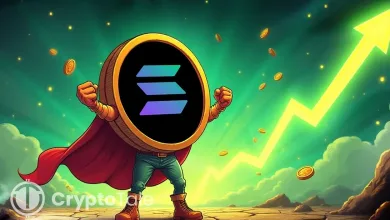Base Founder Demands Non-USD Stablecoins for Real Utility

- Pollak says crypto lacks true utility without non-dollar stablecoins in circulation.
- Coinbase’s Base now supports 12 local stablecoins plus new SGD and AUD-pegged launches.
- The stablecoin market cap hits $309B, with USDT and USDC controlling most activity.
The dominance of dollar-pegged stablecoins was under scrutiny at Token2049 in Singapore on Thursday, where Jesse Pollak, creator of Coinbase’s Base, called for urgent diversification.
As per a recent report, 99% of stablecoins are tied to the U.S. dollar, even though only 60% of the world’s reserves are held in dollars. Major currencies like the euro and yen are absent from crypto financial sector, limiting local usability and everyday adoption.
Dollar-Pegged Stablecoins Maintain Global Control
Pollak noted that the global crypto economy is denominated in dollars, leaving a gap for non-dollar assets. While stablecoins pegged to gold or other fiat currencies exist, their market presence remains negligible.
As per CoinMarketCap, the total market capitalization of stablecoins is at $309 billion, with $206 billion in daily trading volume. Examples of dominant U.S. dollar stablecoins include Tether (USDT) and USD Coin (USDC), which together control most of the sector.
Pollak argued that this dollar concentration emphasizes U.S. dominance in global payments while restricting utility for economies operating primarily in other currencies. Notably, some countries, including South Korea and China, are already developing won and yuan based stablecoins to reduce dependency on dollar backed alternatives.
He emphasized that without non-dollar stablecoins, crypto cannot fully integrate into real world economies. Pollak said local currency pegged tokens would allow people to conduct daily transactions in the denominations they already use, covering payments, borrowing, and lending without conversion issues.
Base Expands Non-USD Stablecoin Options
Pollak revealed that the Base network processed approximately 81 billion stablecoin transactions in September, translating to about $1.5 trillion in value. He added that the platform currently hosts 12 local currency pegged stablecoins, including tokens linked to the Indonesian rupiah, Turkish lira, New Zealand dollar, and Brazilian real.
Coinbase and Base also announced the launch of two additional stablecoins on Thursday, pegged to the Singapore dollar and Australian dollar. Pollak said these additions show the growing demand for local currencies on-chain, as they create direct utility for regional markets. He argued that when people have access to familiar denominations, adoption becomes more practical and inclusive.
According to him, introducing local stablecoins enables countries to bring their sovereign currencies on-chain while connecting their economies to global finance. He stressed that stablecoins linked with local currencies reduce reliance on a single currency and expand the reach of decentralized uses.
Related: Are Stablecoins Reshaping Global Monetary Policy?
Base App Targets Creator Economy
Alongside stablecoin expansion, Pollak discussed the company’s development of Base App, a product rebranded from Coinbase Wallet. The application, launched in beta in July, is designed as a super app combining instant payments, social networking, trading, and mini-apps.
Pollak said it is currently being tested by early users, with over 1.2 million people already on the waitlist. The app focuses on the creator economy, with Pollak emphasizing that Web2 platforms have about 95% of generated value while creators receive less than 5%.
In contrast, on-chain social networks redistribute earnings, giving creators access to the majority share of economic benefits. Pollak described this as a reversal of existing models, ensuring value is with those producing content.
He explained that Base App aims to support “create-and-earn” systems, directly rewarding the market for contributions. The long term plan is to expand access globally, particularly across Asia, which Pollak described as a key hub for crypto adoption. He said the company is actively establishing country leads to accelerate adoption of both non-dollar stablecoins and creator focused tools.
Meanwhile, Pollak’s remarks indicate the risks of overreliance on dollar-backed stablecoins while presenting local alternatives as a pathway toward wider usability. Base’s introduction of 12 non-dollar tokens, alongside two new currency additions, demonstrated that demand already exists for region specific options. Meanwhile, the Base App demonstrates a broader change toward empowering users and creators through on-chain models.





